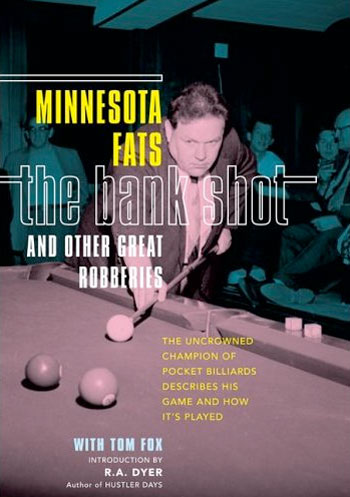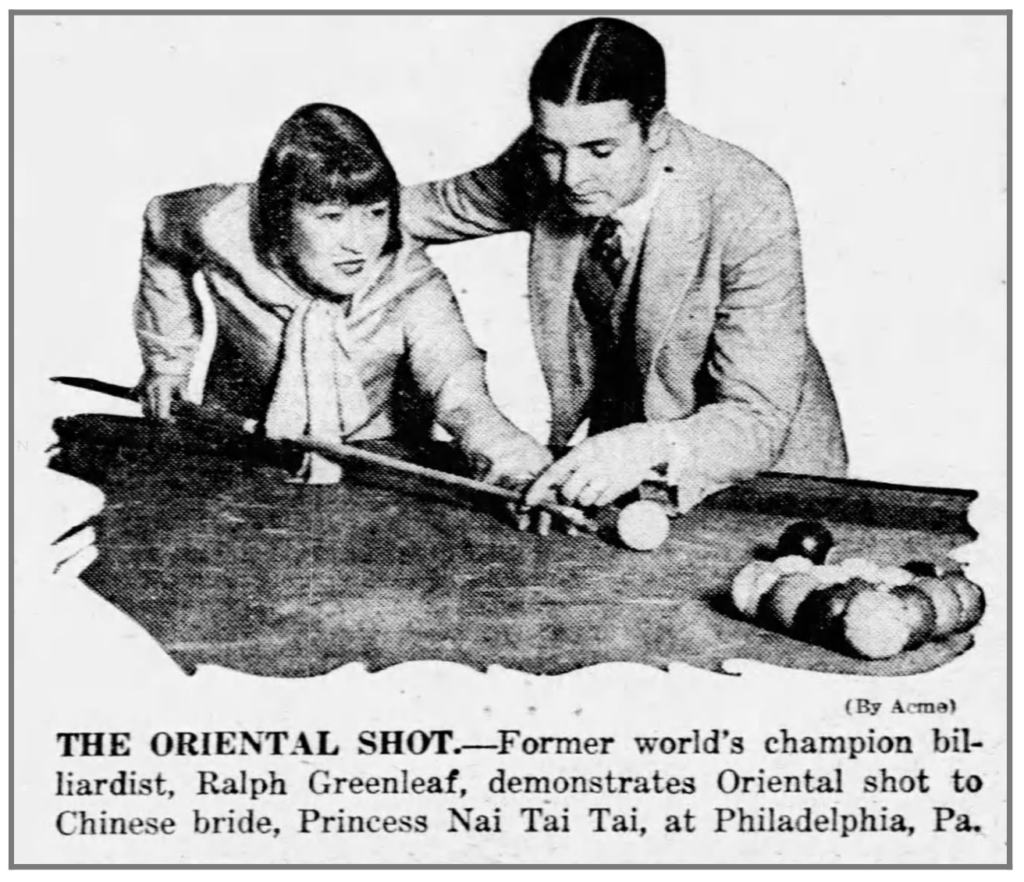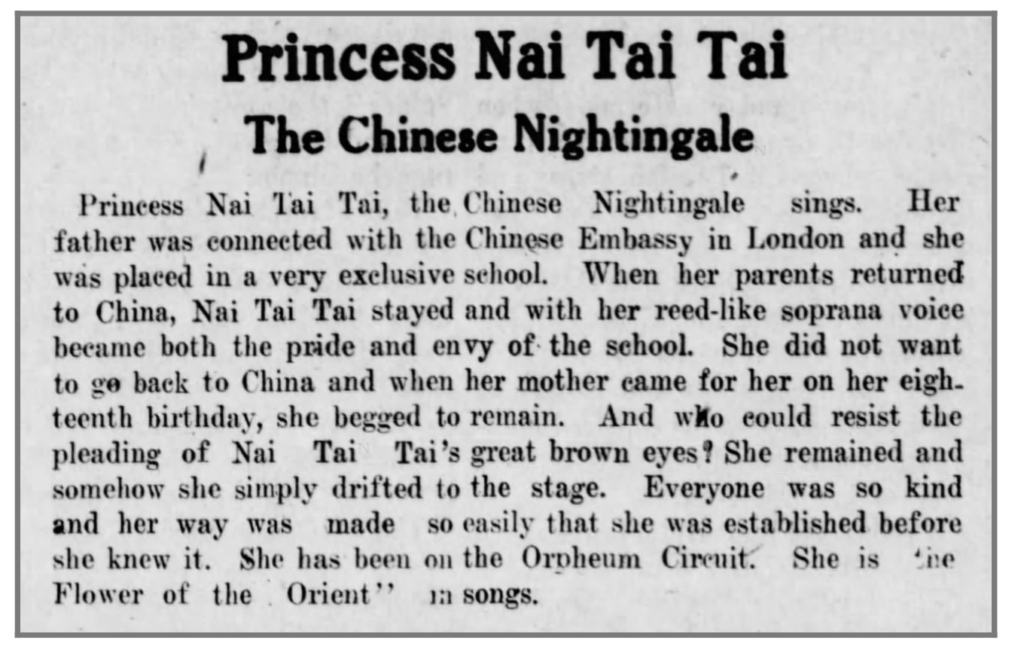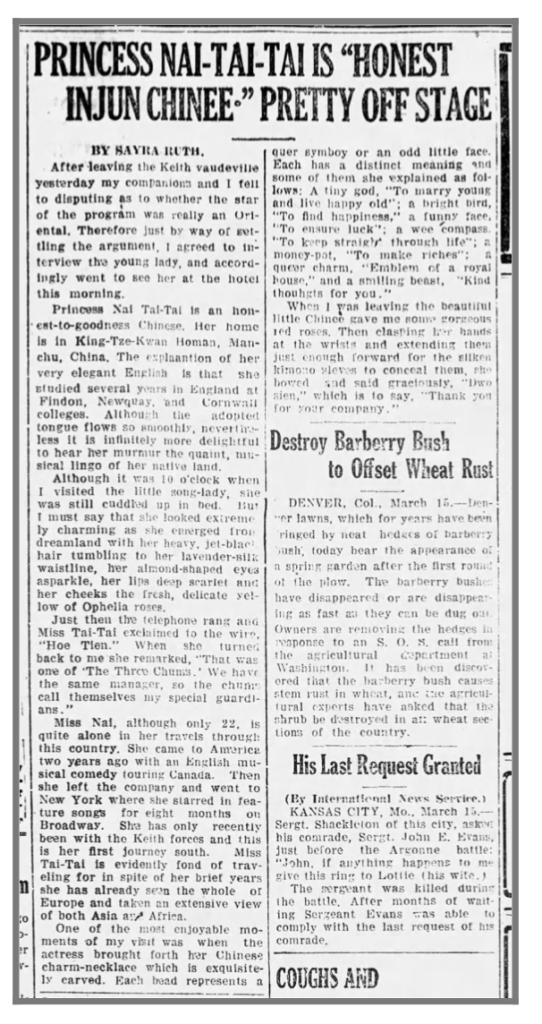
My long-time friend Karen Fox recently sent me this lovely photo, above, of Amelia Greenleaf, the then-widow of billiard champion Ralph Greenleaf, chatting with Karen’s late husband, Tom Fox. Greenleaf is remembered now as one of the very best pool players in American history. Tom was a successful newspaper columnist and the co-author of the Minnesota Fats biography, The Bank Shot and Other Great Robberies.
Greenleaf’s wife, a one-time Vaudeville performer who went by the stage name “Princes Nai Tai Tai,” continued living on her own for some years after Greenleaf’s untimely death in 1950. It was in Center City Philadelphia that she made the acquaintance of Karen Fox, who happened to be living nearby.
I leaned heavily on Tom Fox’s work when I was writing Hustler Days as well as The Hustler and the Champ and for some of my Billiards Digest columns. Fox was an important figure in pool history: he was at ground zero for some of the most important developments during the 1960s, including the very first Jansco tournaments. We credit him with bringing figures like Rudolf “Minnesota Fats” Wanderone and Hubert “Daddy Warbucks” Cokes to the wider attention of the public. Karen, for her part, also attended the Jansco Johnston City tournaments and has been an invaluable resource over the years. She has recounted some truly amazing stories.
So, here’s a quick note from the charming and always knowledgeable Karen Fox about this fantastic rare photo, above. Amelia Greenleaf is probably chain smoking in it: Karen told me that cigarettes were “as much a part of her as the bangles on her wrists” and you can see she’s holding one in the image. That’s Amelia Greenleaf on the left, and Tom on the right. Karen’s comments follow just below, and below those comments I’ve included another historical photo of Amelia Greenleaf and Ralph Greenleaf from 1925 plus a couple of fascinating (albeit now absurdly and painfully politically incorrect) historical newspaper clippings.
— R.A. Dyer
Here is a photo of Amelia Greenleaf — also known as Princess Nai Tai Tai — and Tom interviewing her. We’re in a home we had just moved into, in Lansdowne, Pennsylvania. Amelia lived nearby, in a row house in southwest Philadelphia. She had extensive, magnificent rose gardens in her front-terraced lawn. In her 70s, she also had a custom high-fashion dress salon in the 2000 block of Walnut Street, Center City, Philadelphia.

In 1964 and early ’65, Tom and I lived around the corner from the dress shop, at 112 South 20th Street. I walked past Amelia’s shop most every day. The window sign, elegantly small, in gold leaf, said “Amelia’s Gowns.” I stopped in one day — and a miracle — here she was: Amelia, Ralph Greenleaf’s widow. Tom couldn’t believe I had found her, right there, around the corner. She worked into the night, designing high fashion clothing for an elite clientele.
I spent many nights with her — learning about design — and listening to her stories of Ralph, the billiard champion, and her life as the theatrical performer Princess Nai Tai Tai. She learned tailoring in China. She was the daughter of a British diplomat and an oriental princess. She was schooled in Britain. She designed first on paper, then in muslin. Most of the sewing machine work was done by a lovely woman from Latvia.
One of Amelia’s specialties was creating delicate flowers from fabric and attaching them to skirts and shoulders. She said “clothing should float on the body, not be all hemmed in.” She would tear out seams over and over again until she got the straight line she wanted to achieve. She said in China she achieved perfect lines by steaming them in, with a heavy metal iron heated by a charcoal fire.
— Karen Fox




Recent Comments